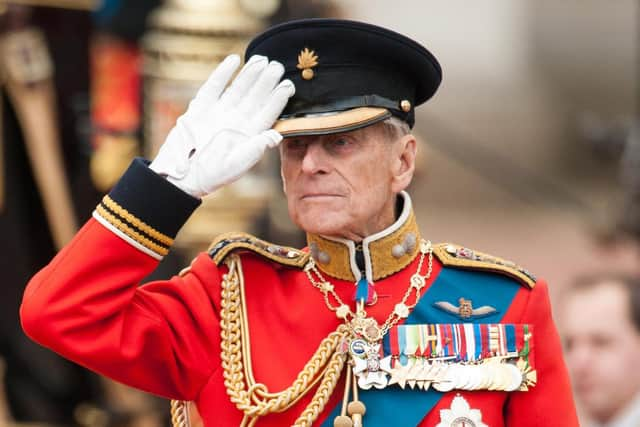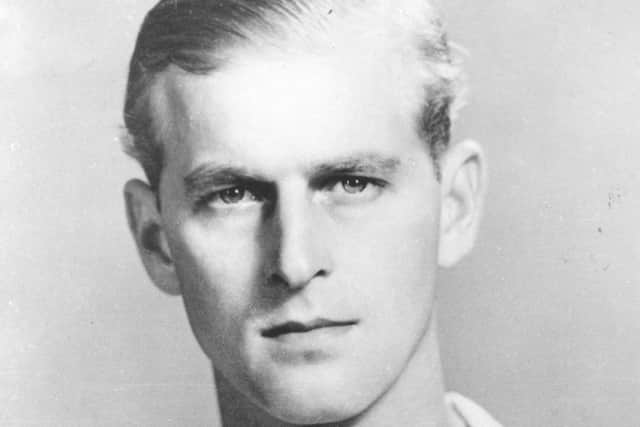Prince Philip: Remembering the Duke of Edinburgh's incredible military career
Carefree they may have been, but they were also dangerous. He saw active service during the Second World War and was mentioned in dispatches for his courage under fire during a battle with the Italian fleet in 1941.
Philip’s love of the sea began at Gordonstoun, where he excelled at sailing. Yet it was flying that tempted him towards a service career. He intended to join the RAF until his uncle, Lord Louis Mountbatten, steered him towards the Royal Navy.
Advertisement
Hide AdAdvertisement
Hide AdIt was to be a wise choice. Philip was the star student at the Royal Naval College, Dartmouth, in 1939, where his self-confidence marked him out as a natural leader. He was awarded the King’s Dirk and the Eardley Howard Crockett Prize after being named the best cadet.


His first posting came when he was 19, as a midshipman aboard the battleship HMS Ramillies, in Colombo. The next six months were spent in the Indian Ocean.
After service aboard the cruisers Kent and Shropshire, he was transferred to the battleship Valiant, in Alexandria.
In March 1941, he was searchlight control officer when the Valiant engaged Italian warships in a night action off Cape Matapan.
Advertisement
Hide AdAdvertisement
Hide AdPhilip survived unscathed amid his shattered lights as enemy cannon shell ripped into his position.


His commanding officer, Admiral Sir Charles Morgan, said: “Thanks to his alertness and appreciation of the situation we were able to sink in five minutes two eight-inch gun Italian cruisers.”
Philip was awarded the Greek War Cross of Valour for his bravery.
He then returned to Britain for a series of courses that led to his promotion to Sub-Lieutenant, which took him to the destroyer HMS Wallace, based at Rosyth, which sailed escort duties on convoys off the east coast.
Advertisement
Hide AdAdvertisement
Hide AdHe was promoted to Lieutenant on July 16 1942, and then to First Lieutenant the following October, becoming Wallace’s second-in-command and, at just 21, the youngest executive officer in the Navy.
In July 1943, Wallace sailed for Italy and played a vital role in the Allied landings in Sicily. Later that year, Philip was appointed First Lieutenant aboard the destroyer Whelp, and sailed for the Indian Ocean to join the British Pacific Fleet.
Whelp was part of the Allied fleet in Tokyo Bay when the Japanese surrender was signed in 1945.
By then, Philip was courting Princess Elizabeth, and he was brought back to Britain, where he became a staff instructor at the Petty Officer’s School.
Advertisement
Hide AdAdvertisement
Hide AdPhilip’s talents marked him out as one of the navy’s best young officers. His friend, Admiral Lord Lewin, who rose to become First Sea Lord, believed that Philip could have gone that high if marriage to the future Queen had not curtailed his career.
After completing further courses at the Naval Staff College, at Greenwich, Philip was appointed First Lieutenant of HMS Chequers, in 1949. Chequers was leader of the First Destroyer Flotilla in the Mediterranean Fleet.
He was promoted to Lieutenant-Commander in July 1950, and given his first command two months later. HMS Magpie was a frigate serving with the Mediterranean Fleet.
Elizabeth joined him in Malta, and Lord Mountbatten, then Flag Officer commanding the First Cruiser Squadron in the Mediterranean, made over his house, Villa Guardamangia, to the couple, with Philip’s ship at the bottom of the hill.
Advertisement
Hide AdAdvertisement
Hide AdPhilip’s naval career effectively came to an end in February 1952, when Elizabeth became Queen. His two remaining promotions, to Commander in June 1952 and to Admiral of the Fleet in January 1953, were ceremonial.
But he remained passionately interested in the services for the rest of his life. Appointments as Field Marshal and Marshal of the Royal Air Force allowed him to maintain close links with both Britain’s land and air forces. Philip was also Captain-General of the Royal Marines, and Colonel-in-Chief of several regiments, including the Grenadier Guards.
Comment Guidelines
National World encourages reader discussion on our stories. User feedback, insights and back-and-forth exchanges add a rich layer of context to reporting. Please review our Community Guidelines before commenting.